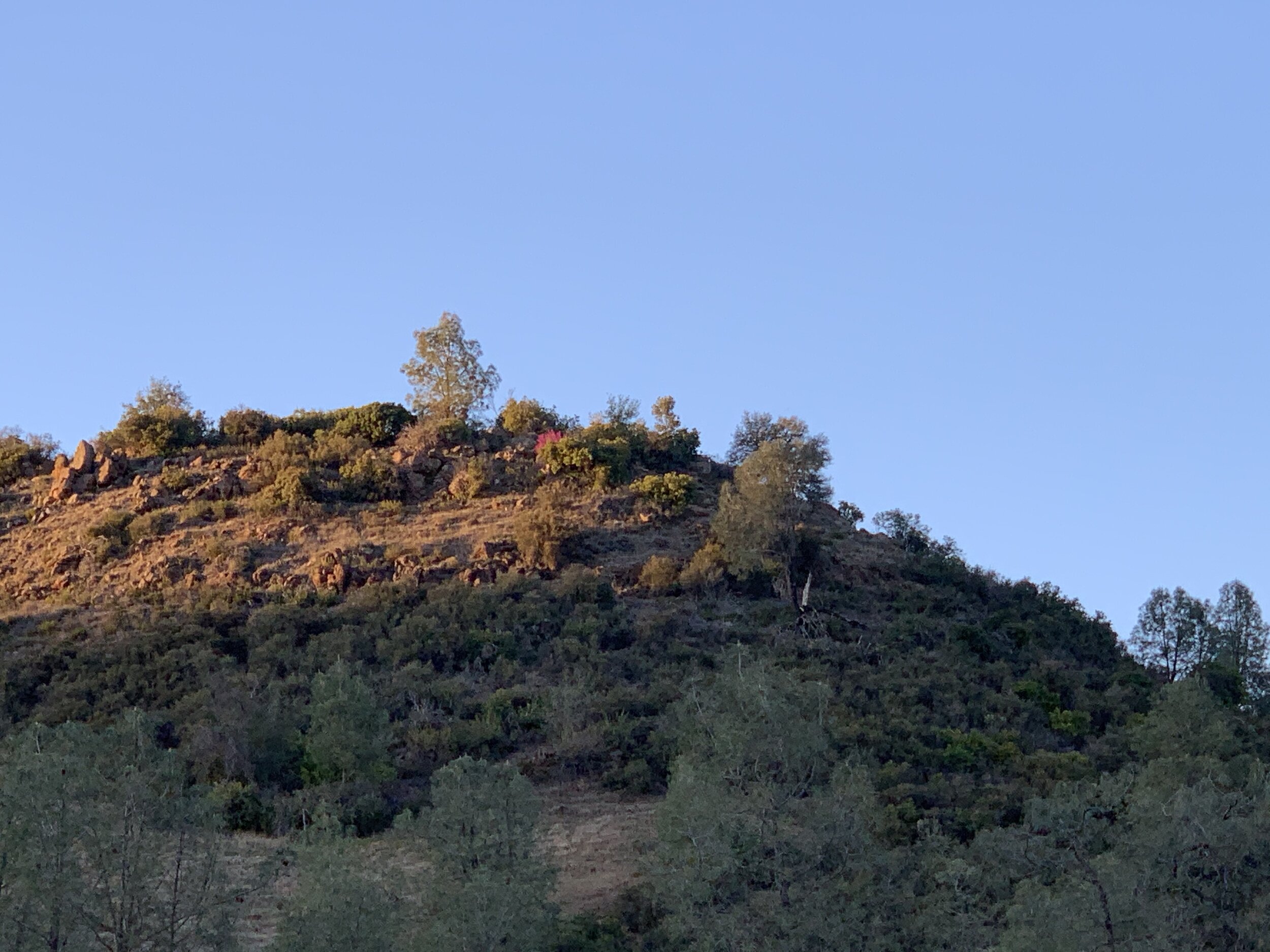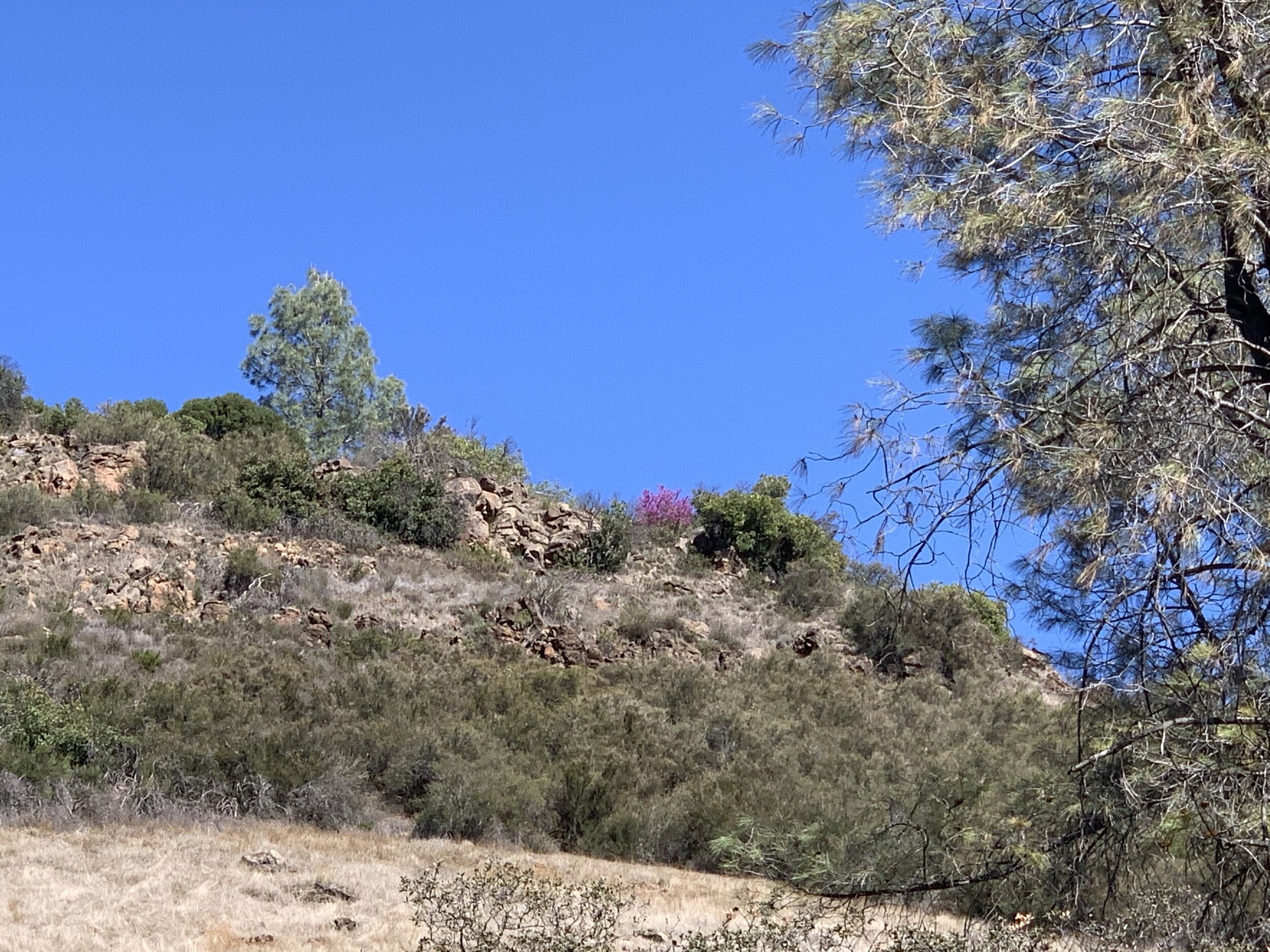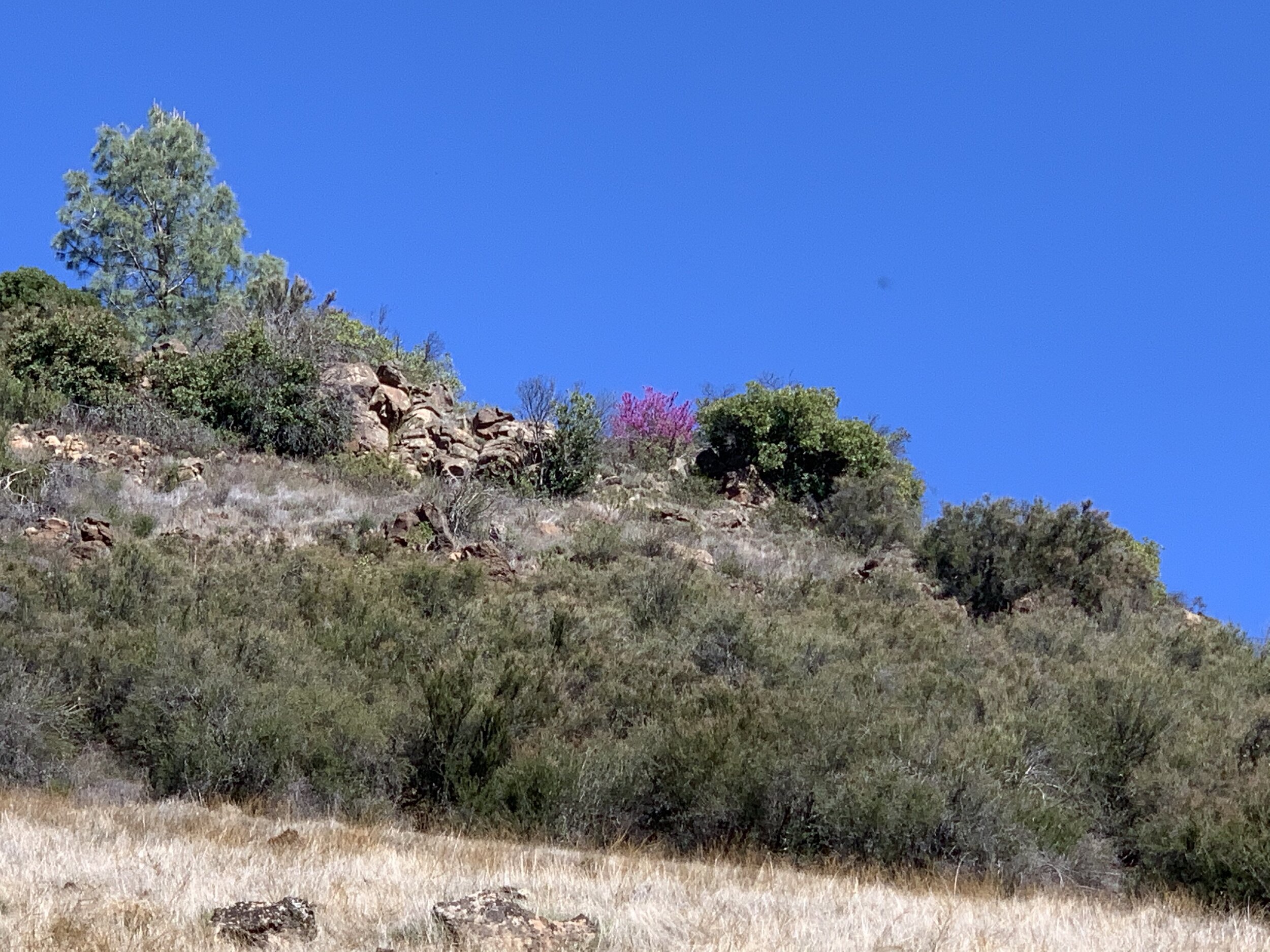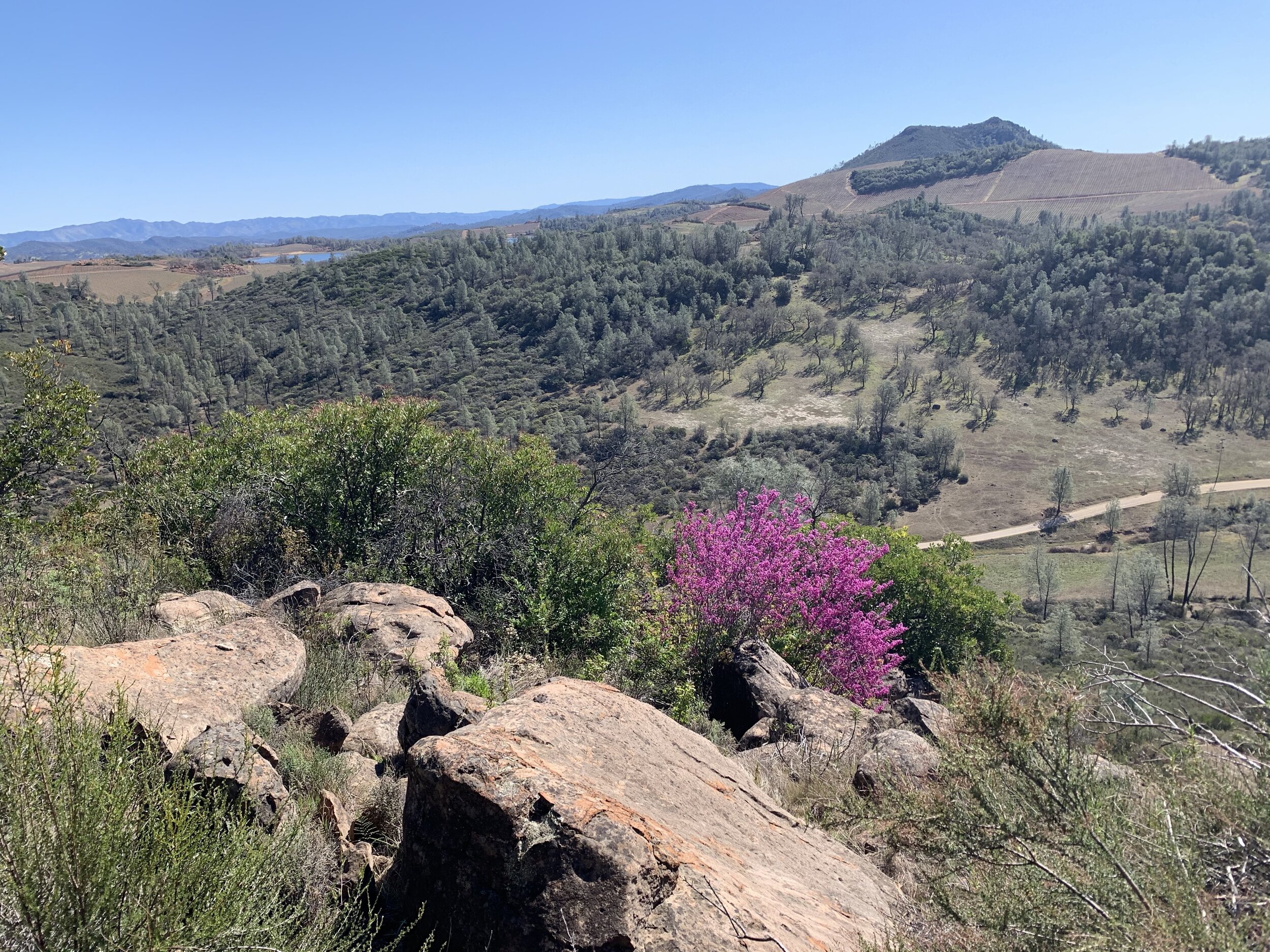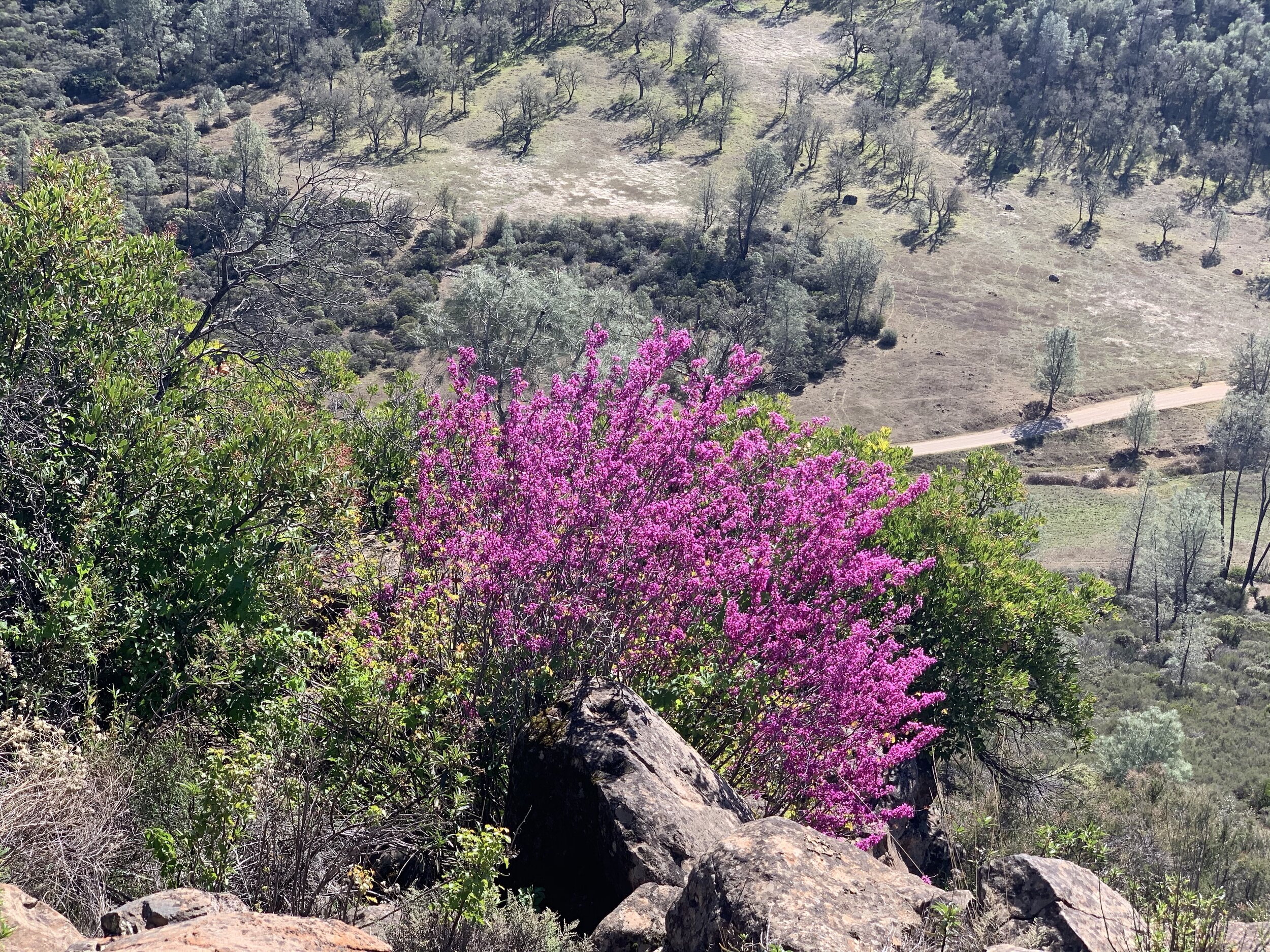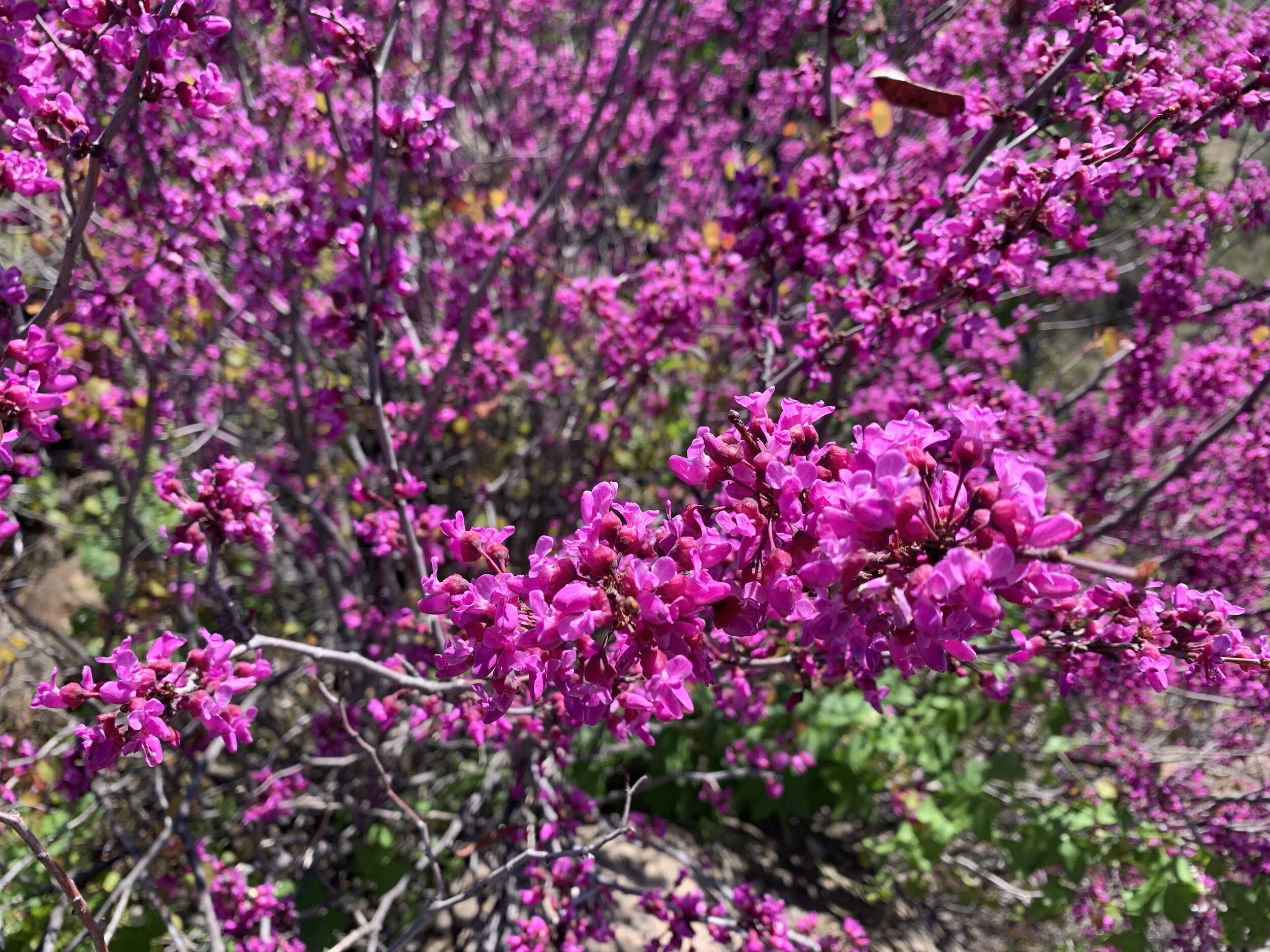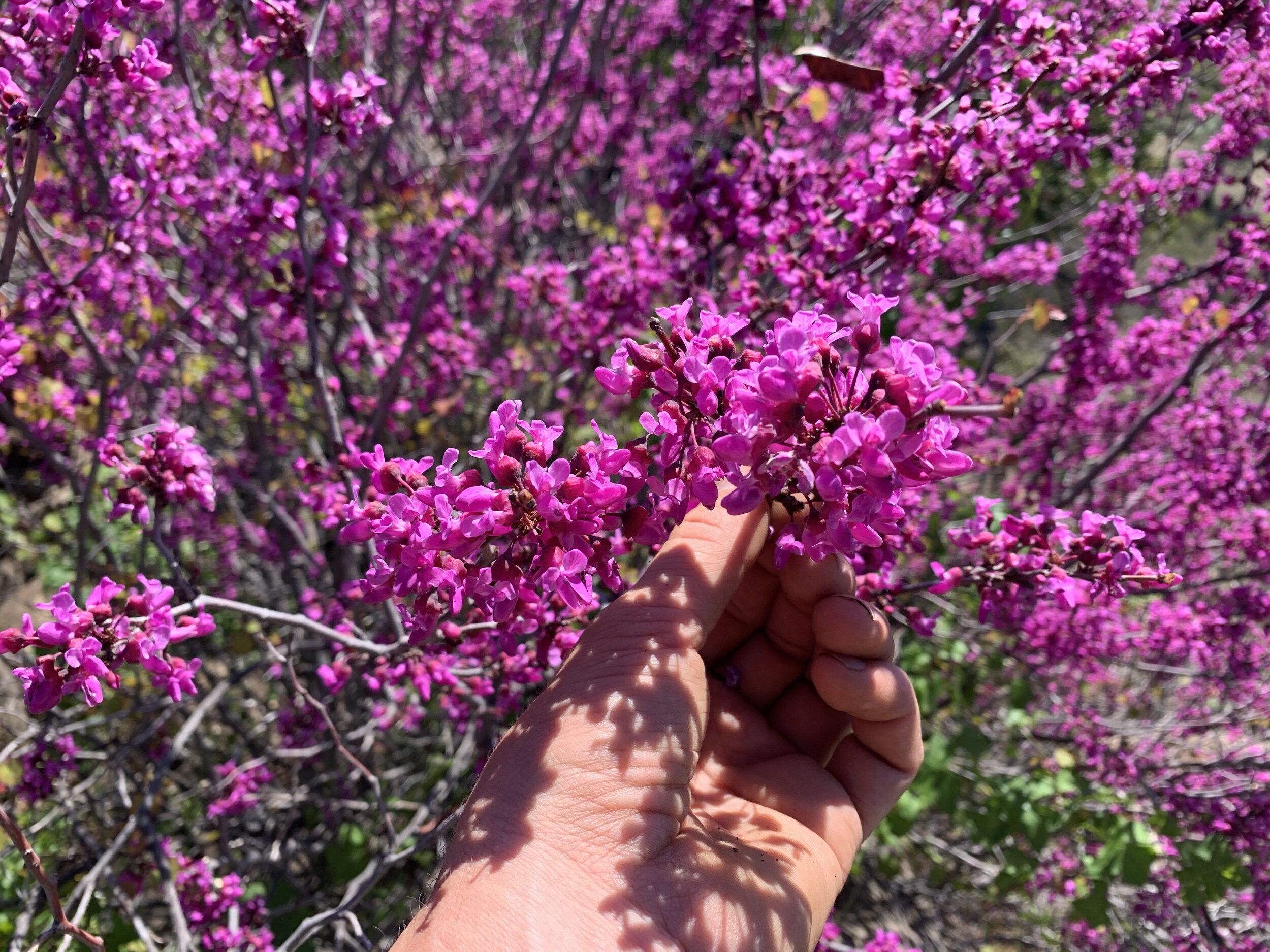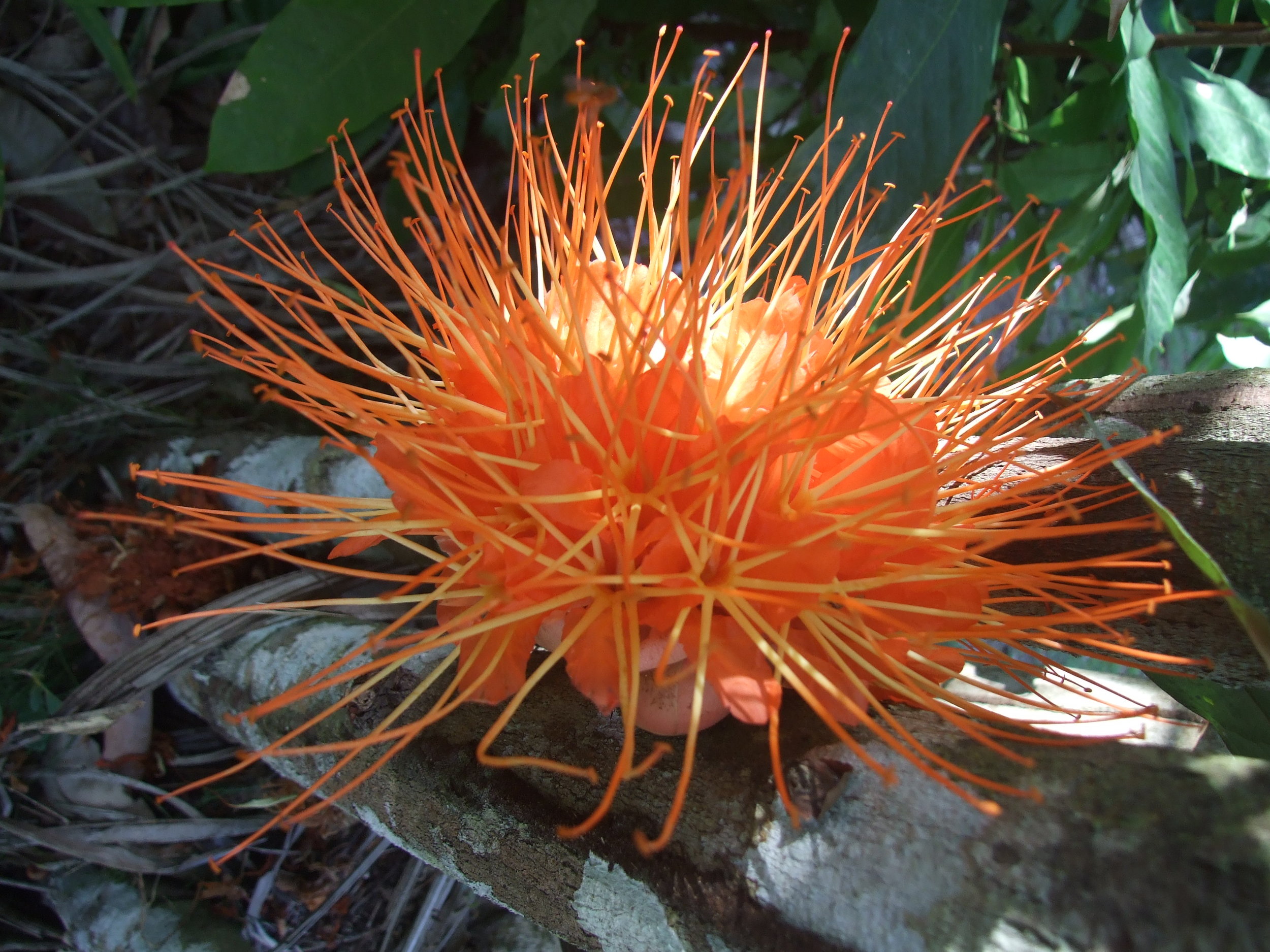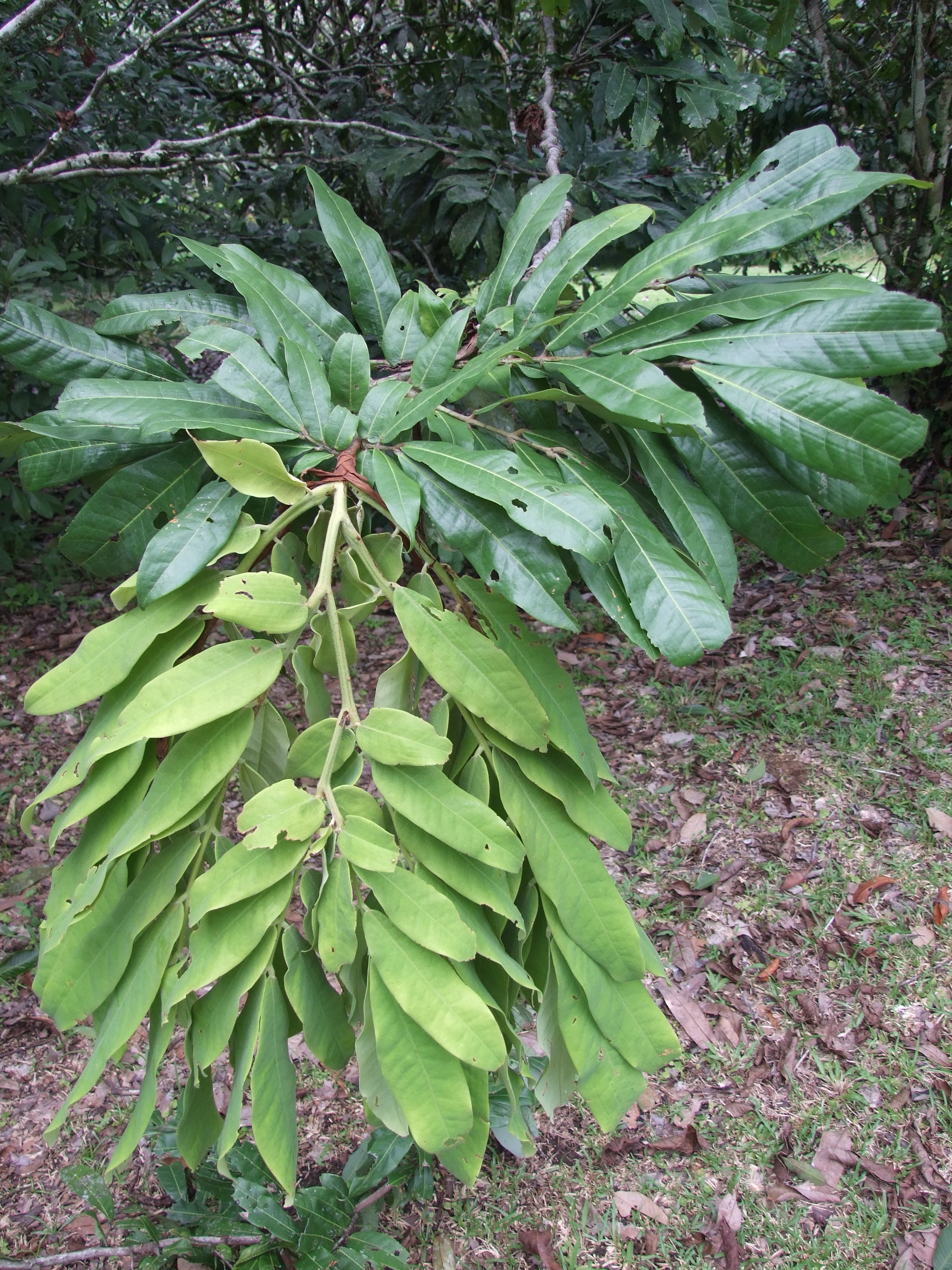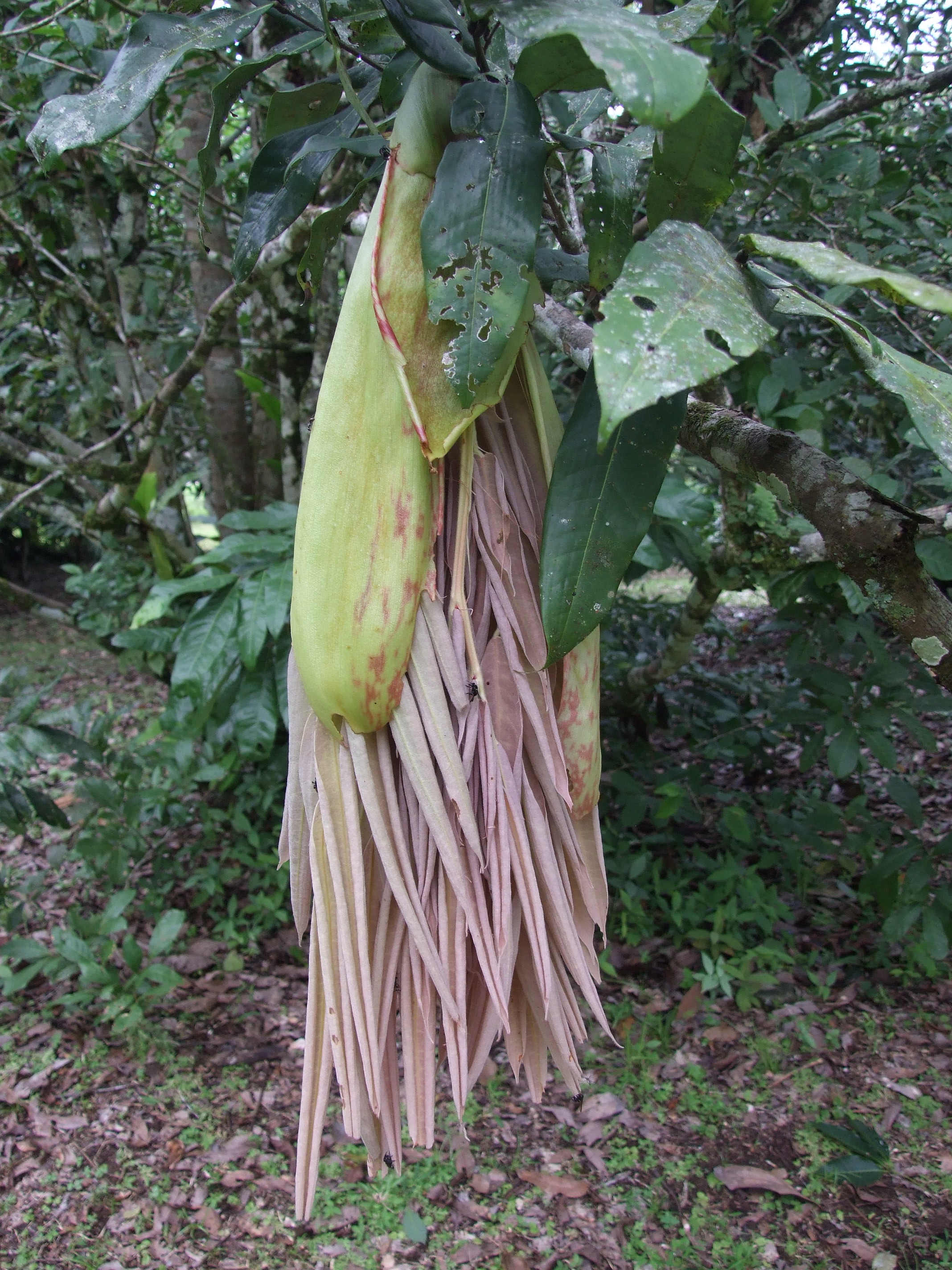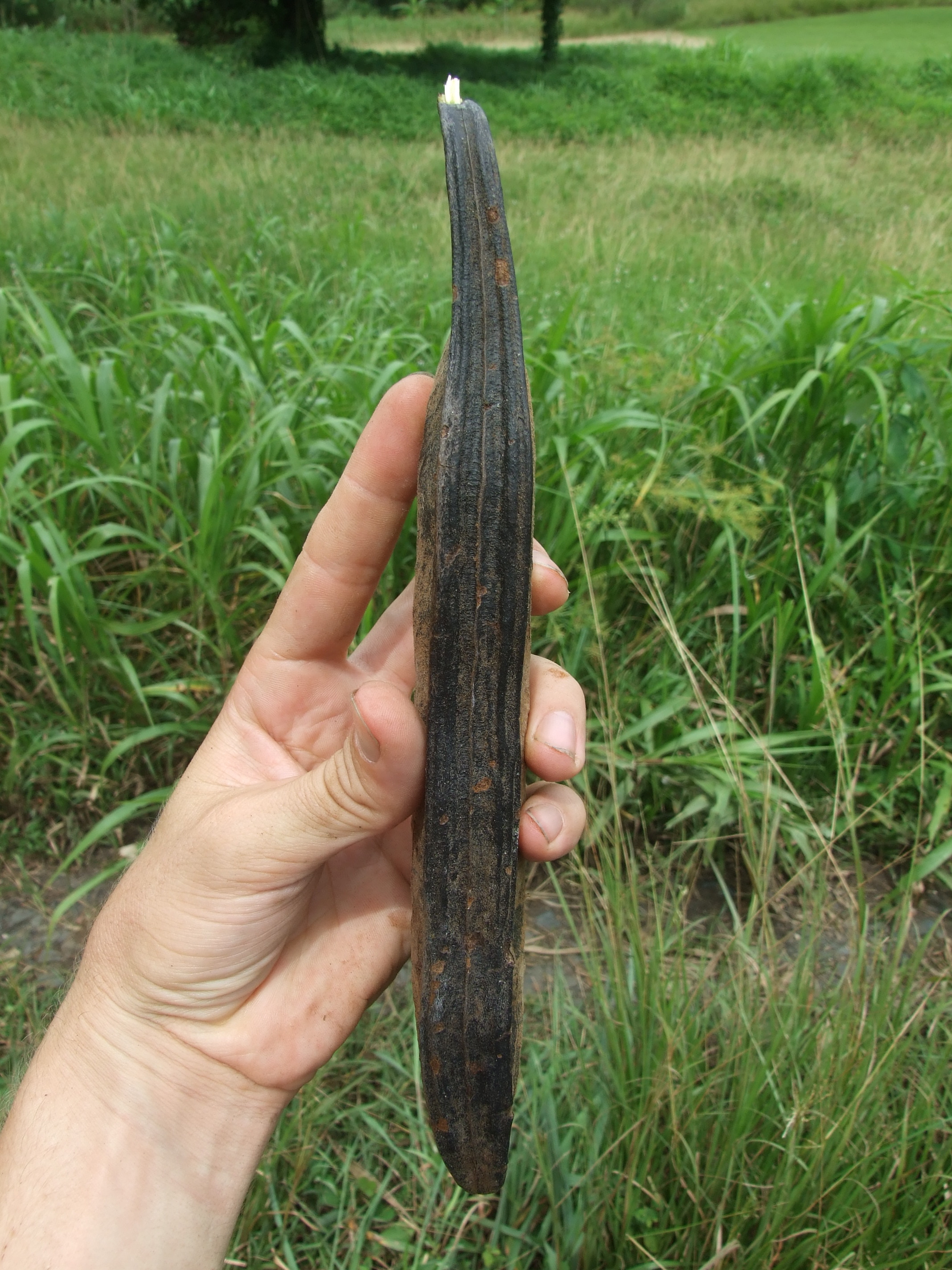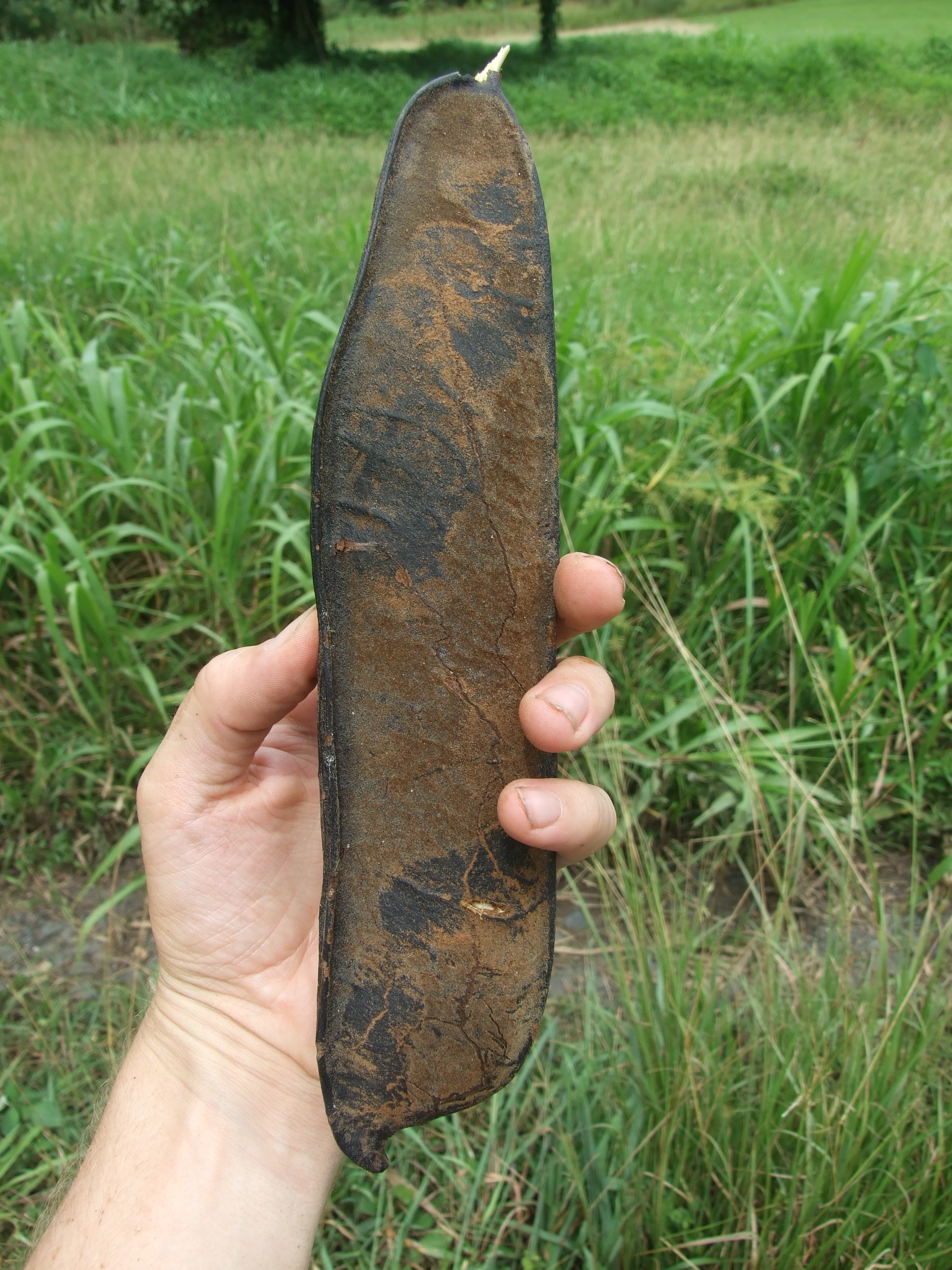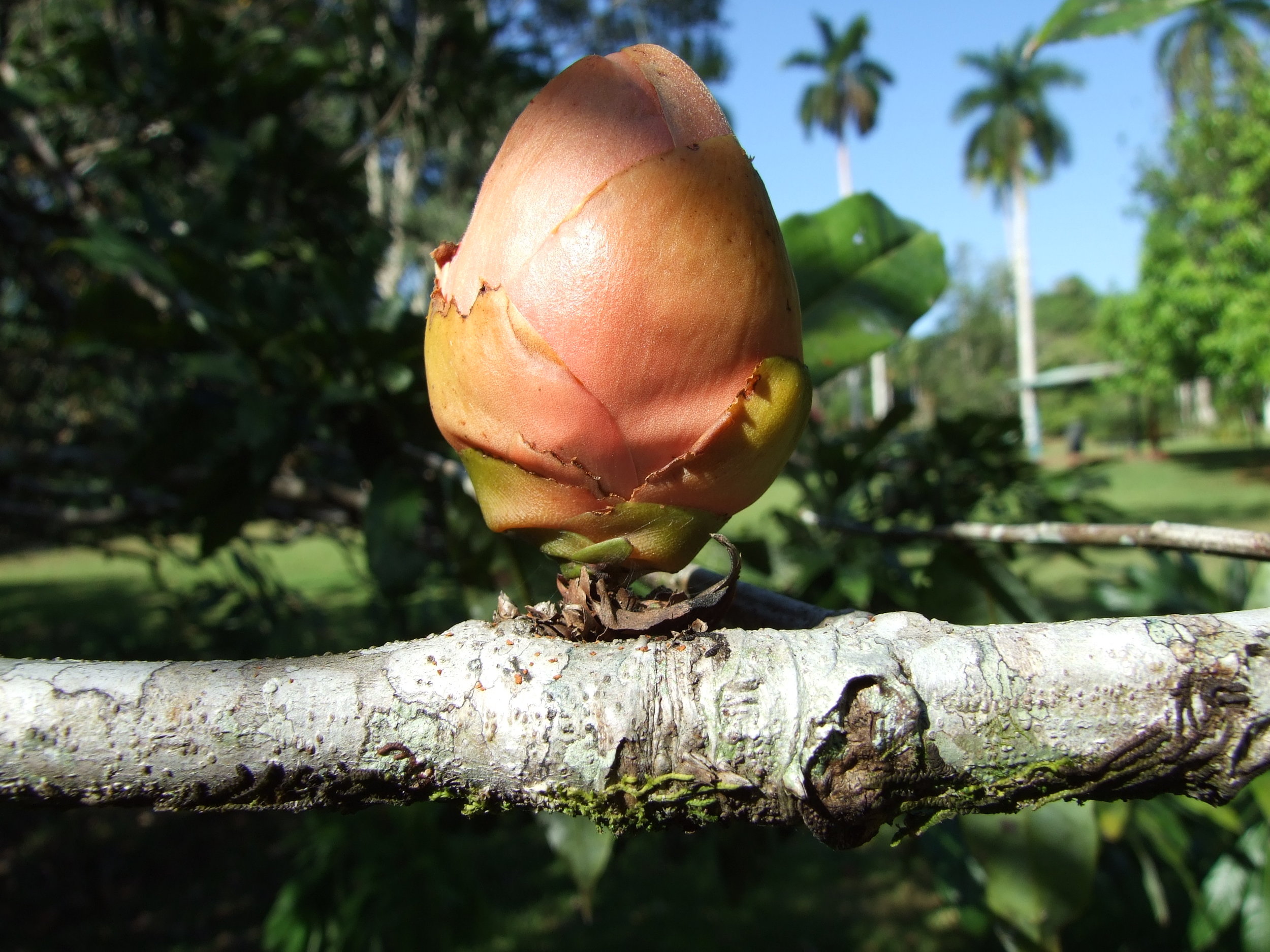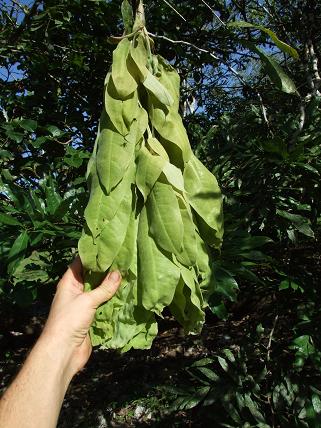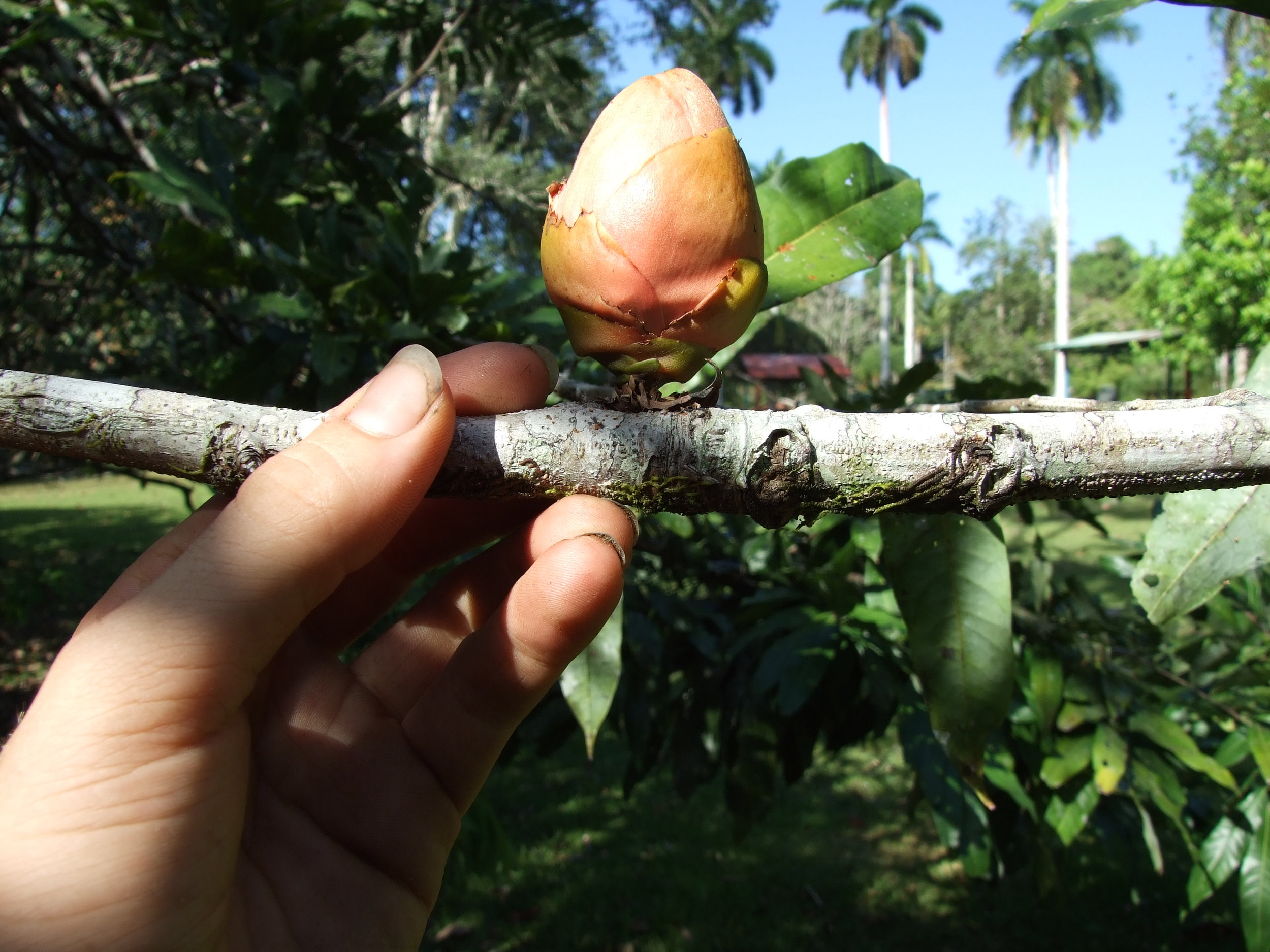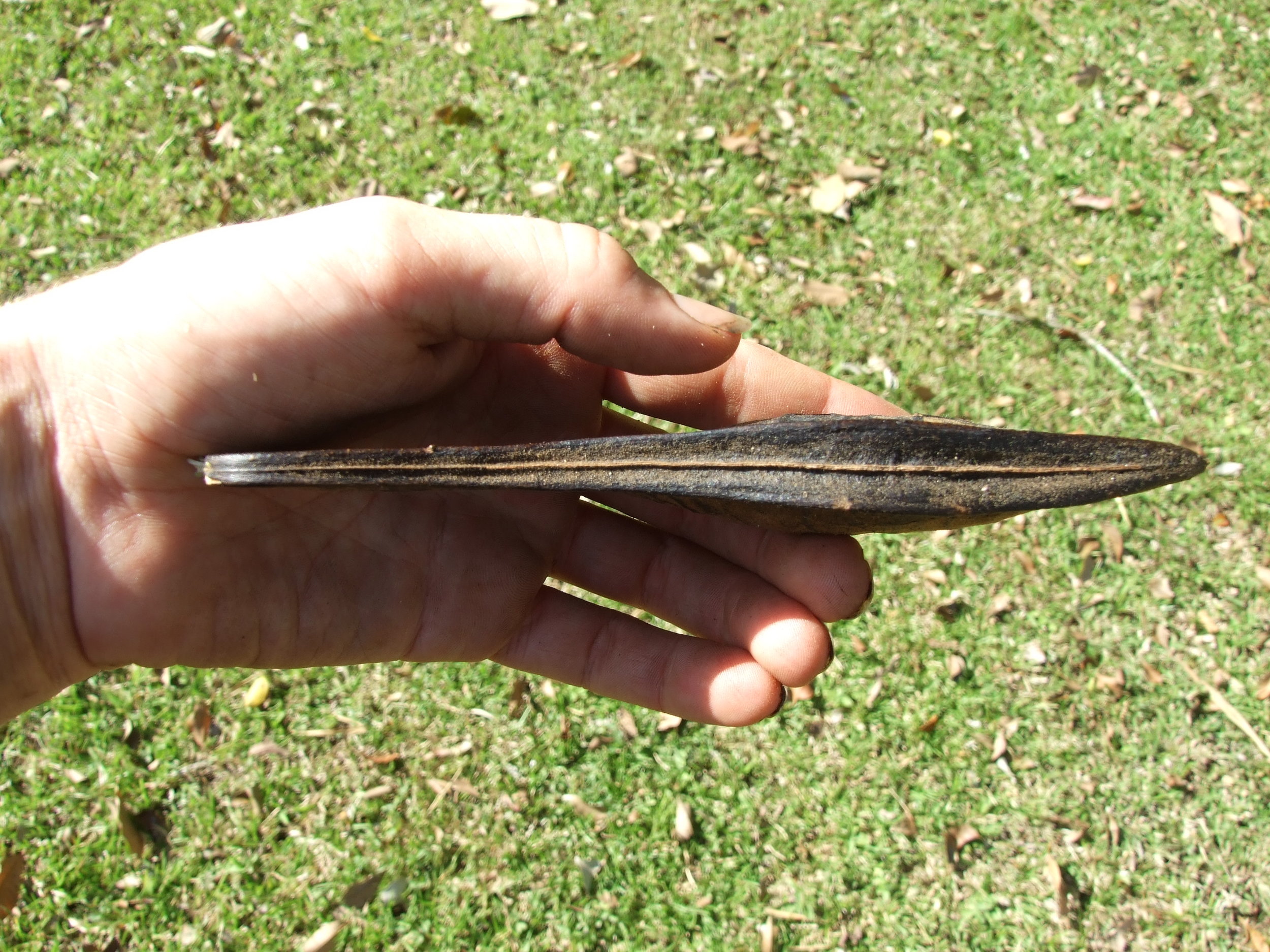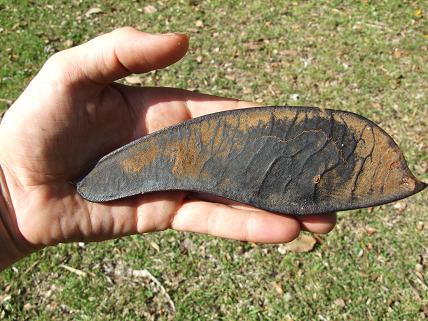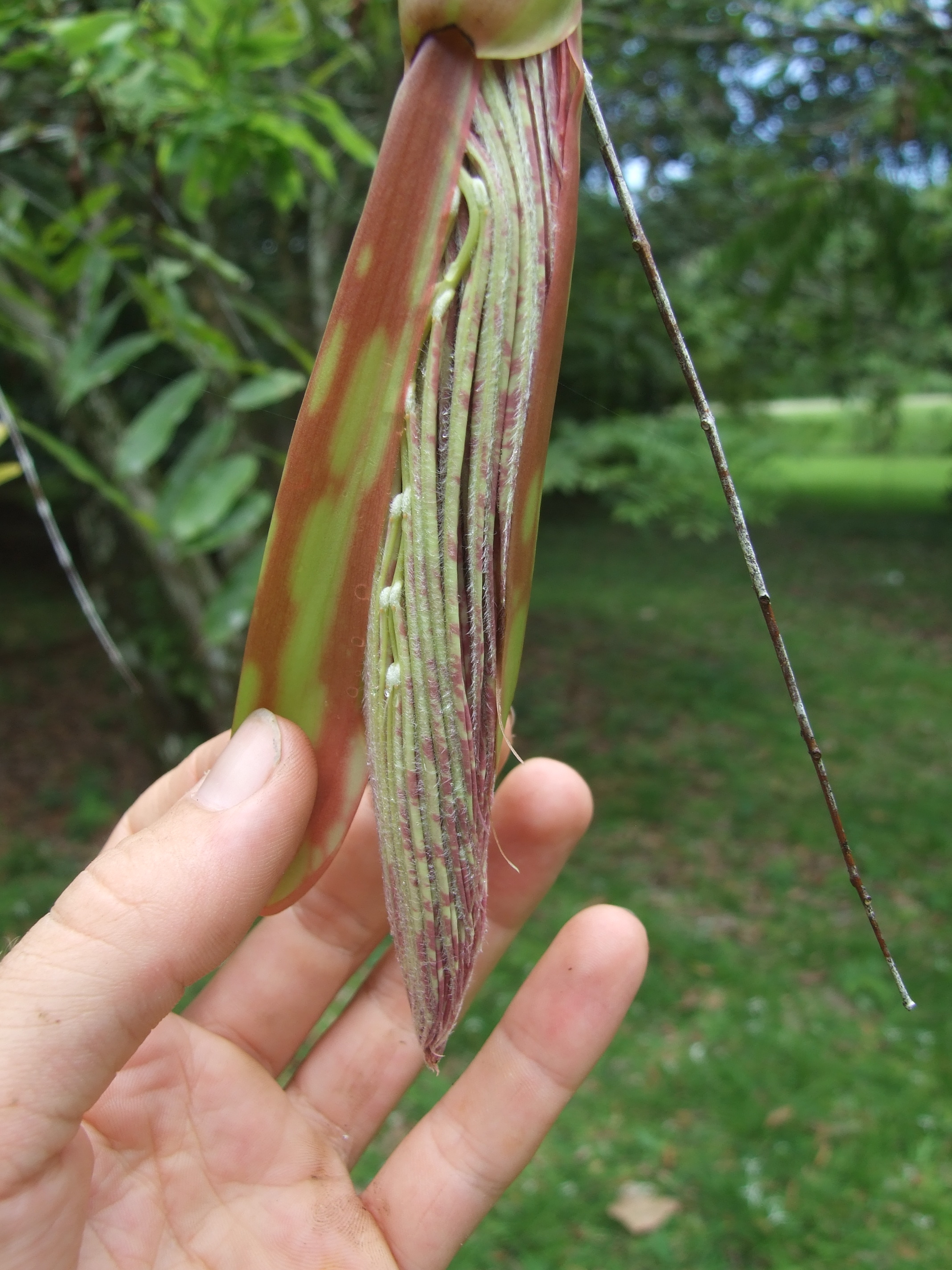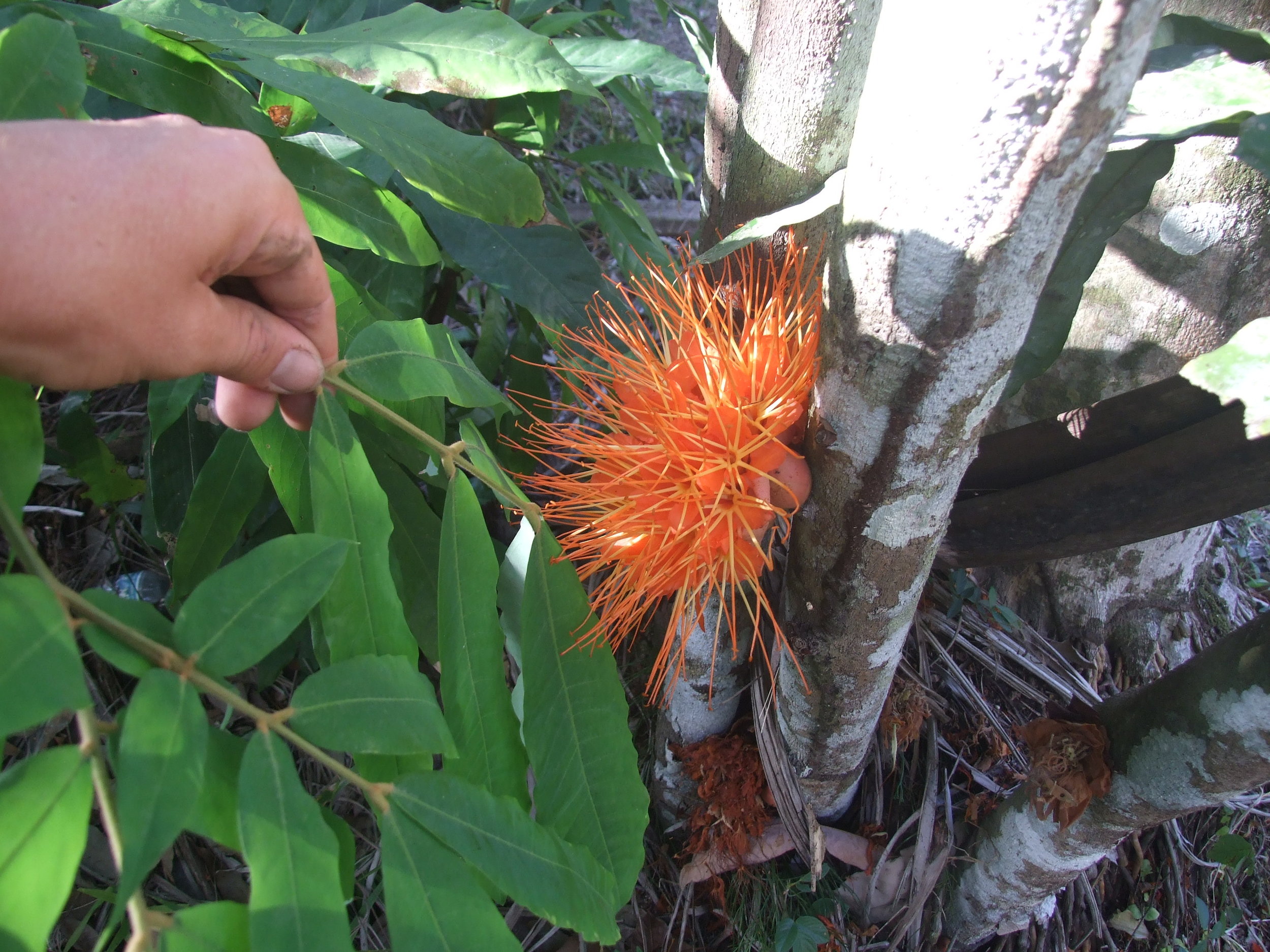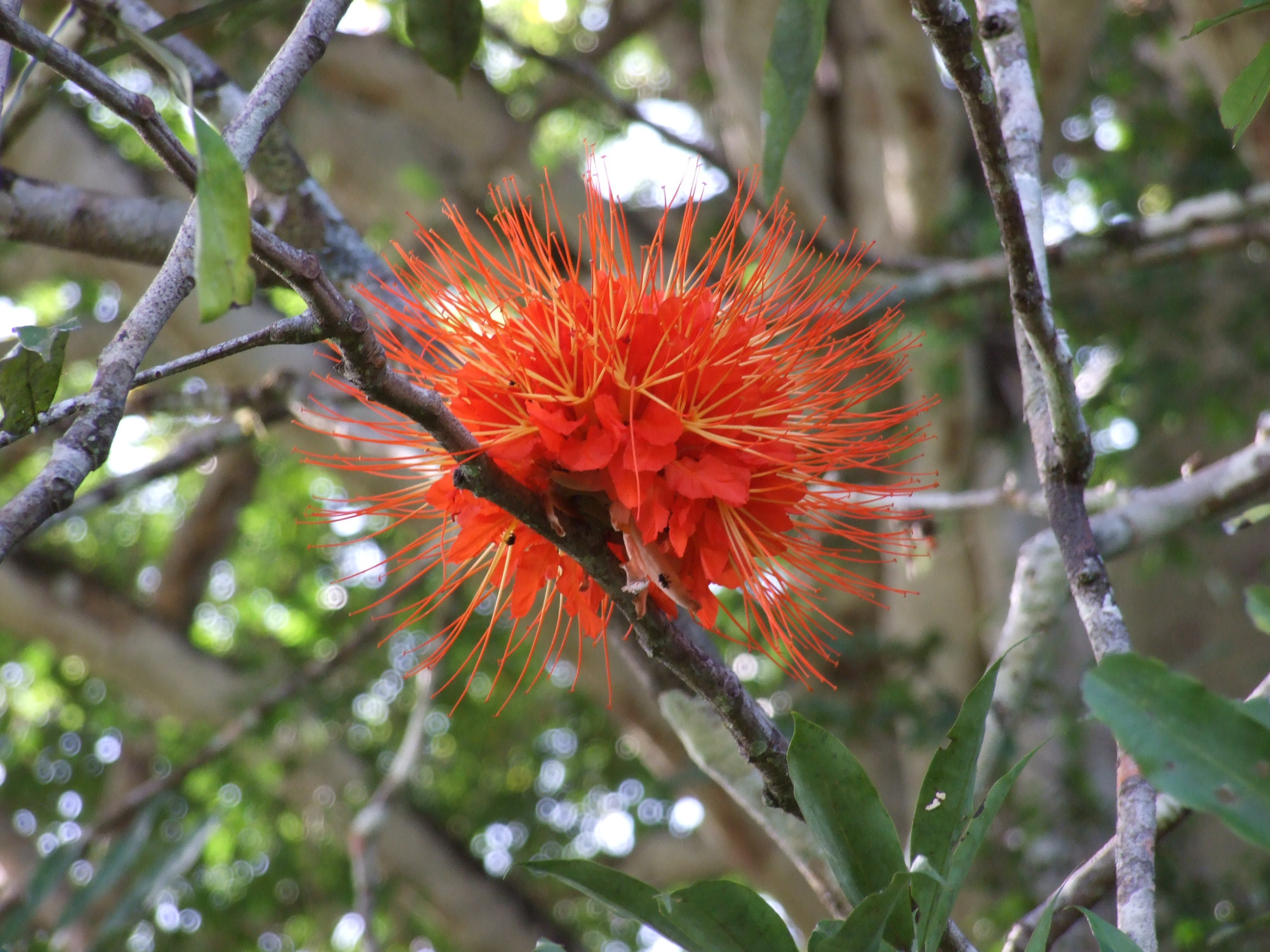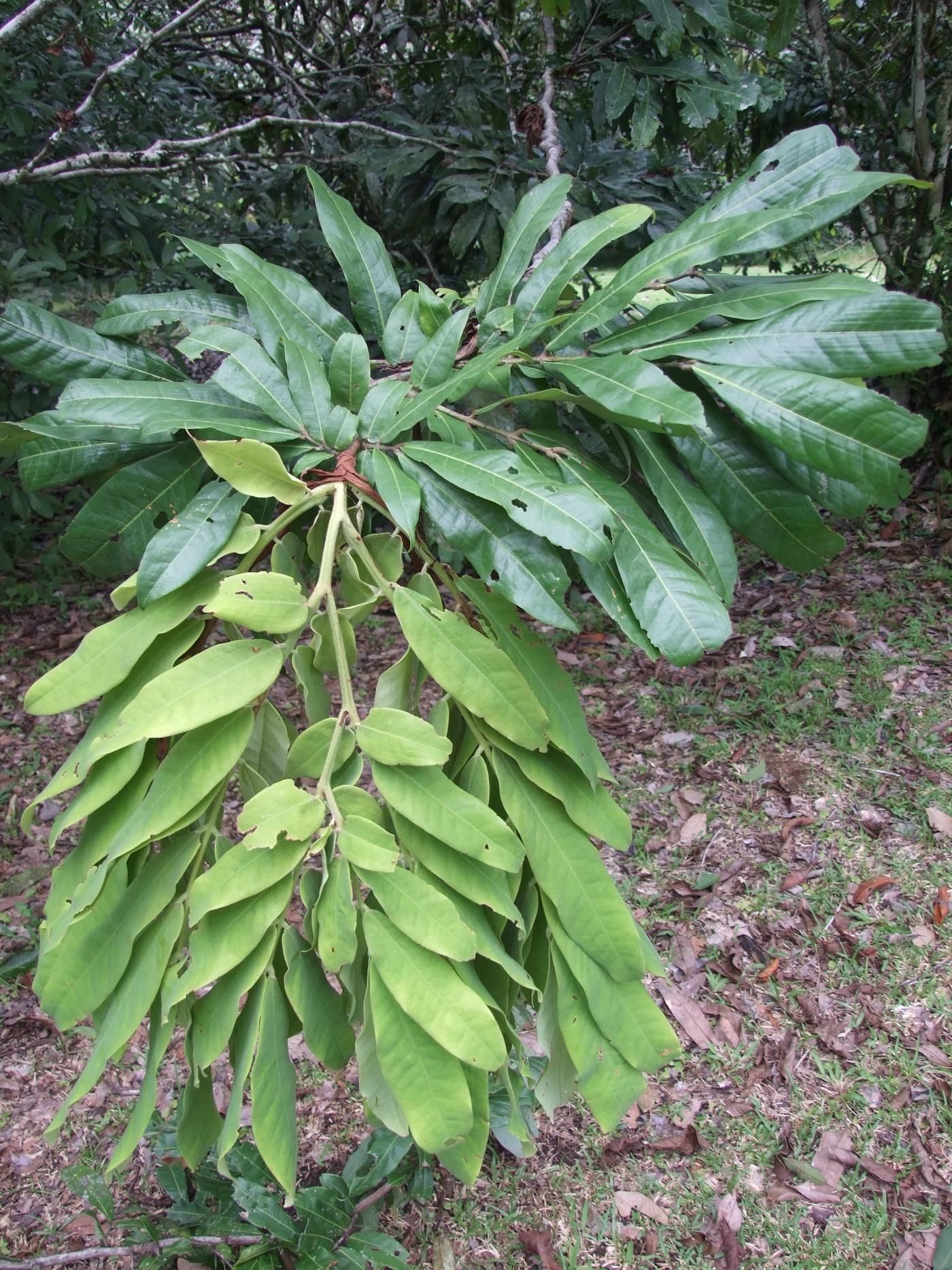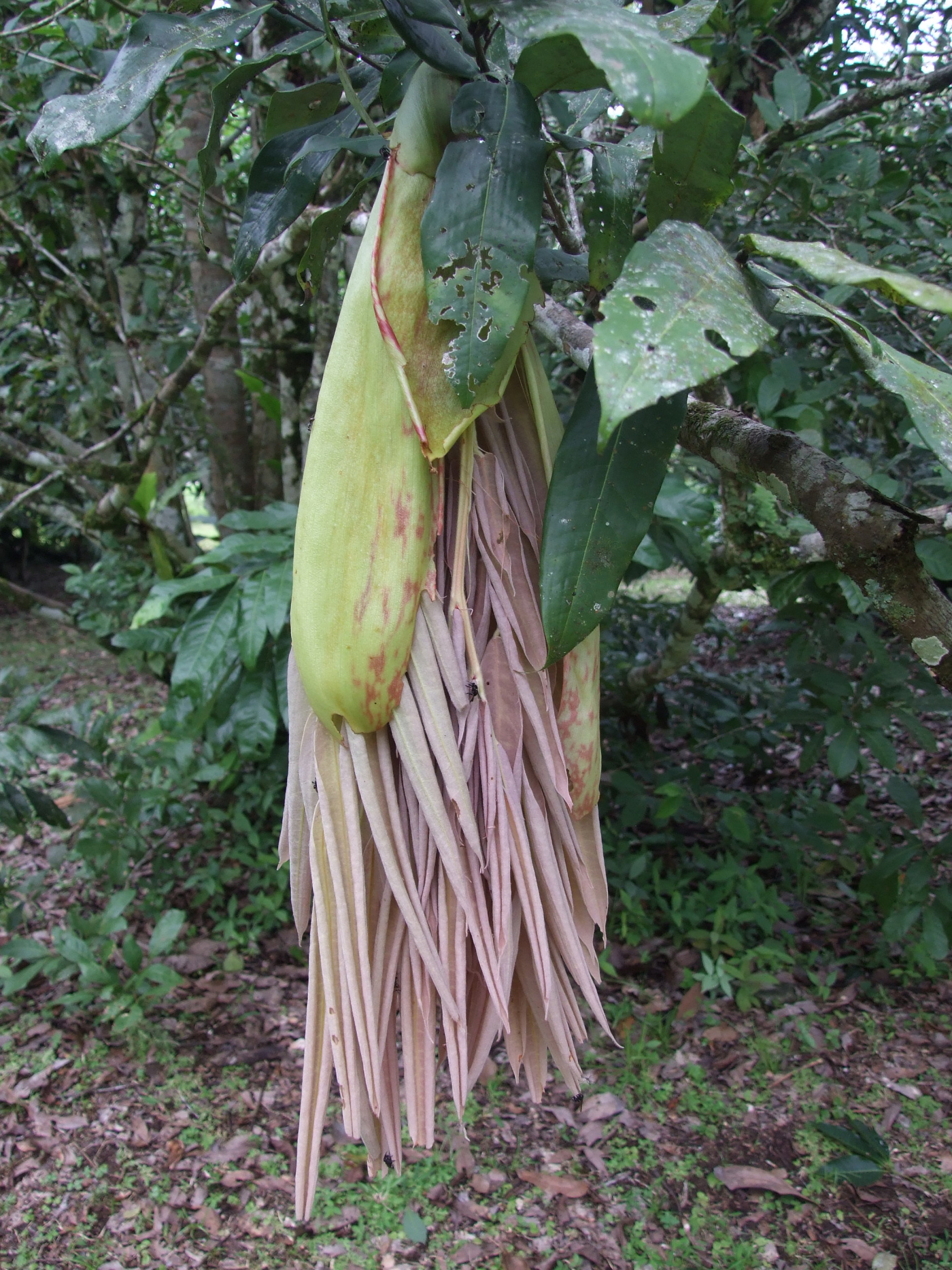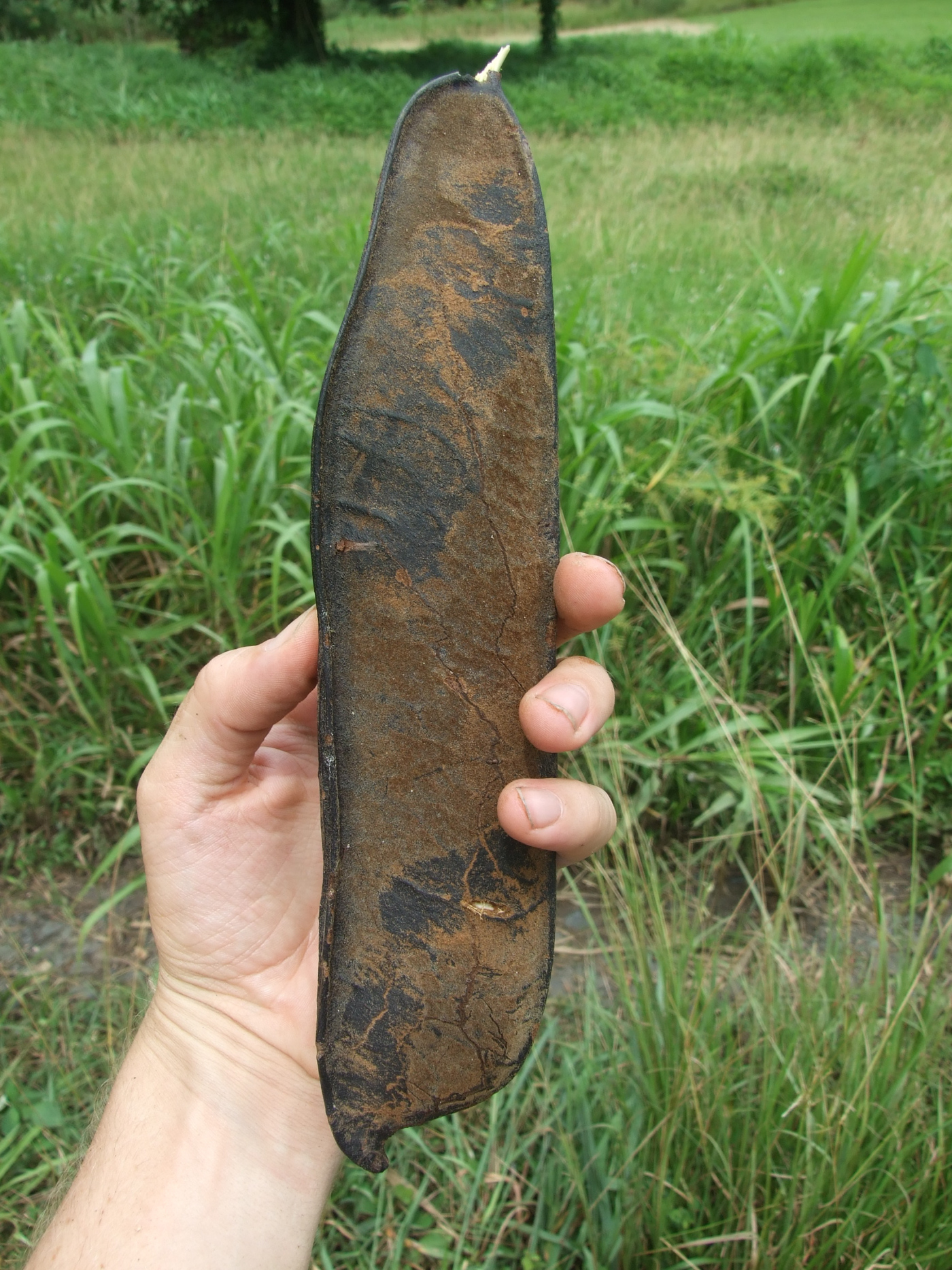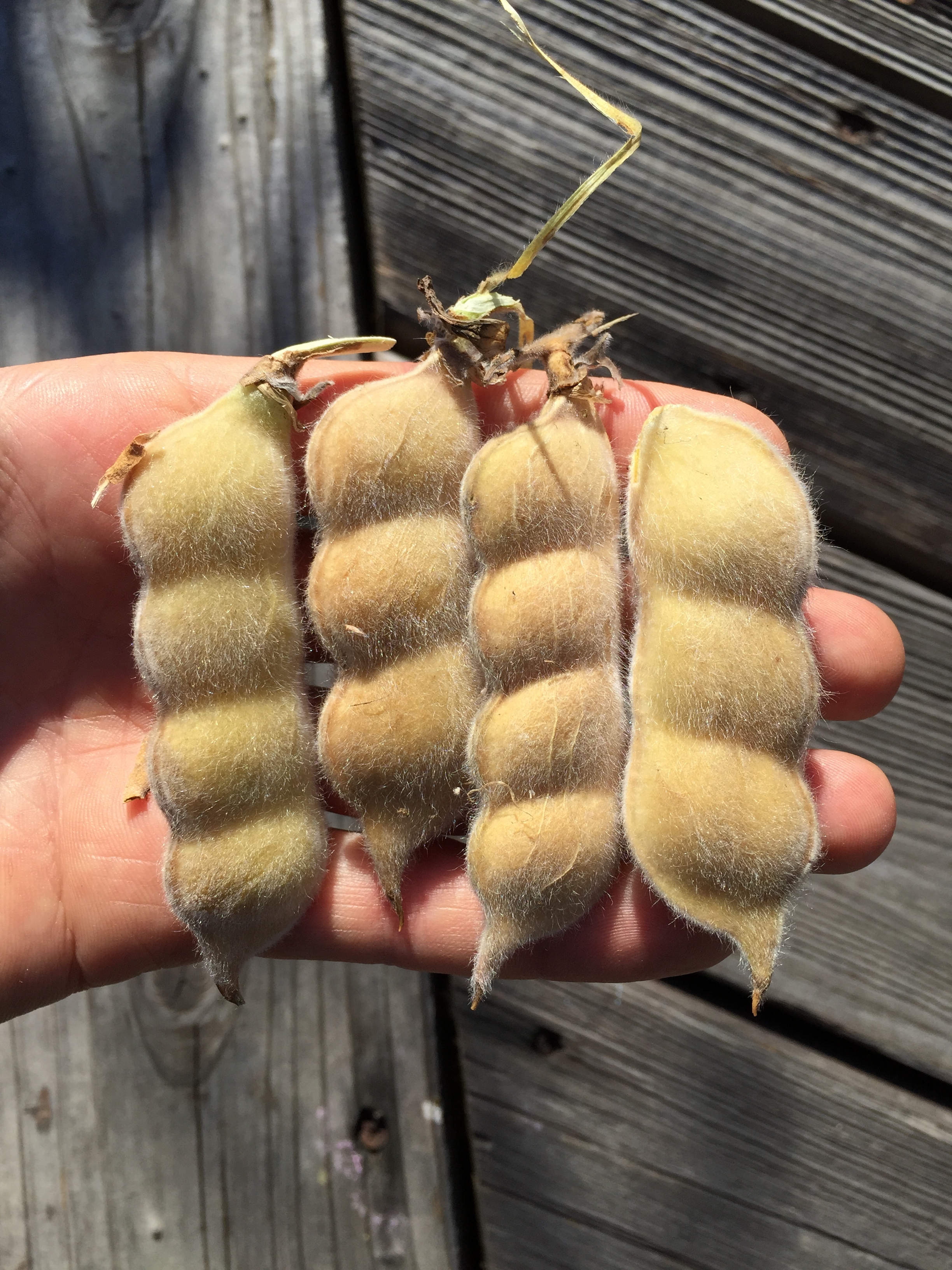Red bud blooming in end of February / early March of this year. Seeing the shock of pink from a distance I hiked up to check this one out. A truly spectacular spring blooming native shrub. The blooming plant is covered in numerous kinds of bees and insects.
Thermopsis macrophylla - False Lupine
A west coast native annual nitrogen fixing plant in the Fabaceae family. Reminds me of Crotolaria in its growth habit and overall appearance. It looks like it has potential as a cultivated, drought tolerant biomass or cover corp species.
Thermopsis macrophylla leaf and flower.
Thermopsis macrophylla flower spike.
Brownea macrophylla - Rosa de Monte, Cuchillito
Lathrus ochrus - Psara, Cyprus Vetch
Lathrus ochrus is one of my favorite regional edible nitrogen-fixing covercrop species in Greece. I've not yet encountered it cultivated in North America.
Lathyrus ochrus leaf and flower
Also known as Cyprus Vetch, or Psara locally, the plant establishes throughout mild winters, as winter temps warm up before spring the tender edible tips start fattening up and plants put on massive amounts of vegetative growth.
Locally the leaves are eaten raw in salads with a bit of lemon, olive oil and a pinch of salt.
It is also reported on PFAF that the seeds are edible cooked noting that caution is advised. Where I have lived in Greece there is no report of the seed being edible, although the leaves are widely consumed during early spring.
Anagyris foetida - an underutilized Mediterranean nitrogen-fixing shrub
Anagyris flowers and leaf.
Anagyris foetida is an ultra drought tolerant memeber of the Fabaceae family. The large shrub originates in the Mediterranean Basin. The plant illustrates one of the best drought resisting strategies of mediterranean flora: the plant keeps its leaves through autumn, winter and spring, then it goes completely deciduous in summer, becoming dormant and highly resistant to drought.
A. foetida can adapt to a wide variety of soils and has been used as a fast growing nitrogen fixing pioneer species in large-scale native restoration of fire damaged areas in Southern Europe.
I first took notice of this tree / shrub where I was living in Greece. Covered in relatively large yellow flowers in winter it stands out. The flowers then develop into relatively large pods full of hard bean / seeds. The leves remind me of Cajanus cajans, a tropical perennial edible bean producing shrub.
Anagyris foetida leaves and maturing seedpod.
in 2017 and 2018 I experimented with direct seeding of this species on a piece of land I am in the process of regenerating, planting Anagyris foetida at high densities as a guild / interplant among fruit and nut trees.
I believe this large shrub has significant potential as a nitrogen fixer in Mediterranean agrorofrestry, afforestation and reforestation systems.
Brownea macrophylla - Rosa del monte
ORIGIN AND DISTRIBUTION
Native to South America - Peru, Ecuador, Colombia, Venezuela; C. America - Panama.
Typically found growing as an understory tree in the rainforest, often subject to periodic inundation.
USES AND ETHNOBOTANY
In the Darien region of Panama the bark of Brownea is boiled in water to make tea used to treat diarrhea. The flower is considered to be "from the devil" and infused in water used for ritual baths.
PROPAGATION AND CULTIVATION
Brownea can be grow easily from the large brown seeds. Some literature states that Brownea seed has a semi-hard seed coat and benefits from light scarification before sowing in order to speed up and improve germination, however I have never found this to be the case. Germinate fresh seeds in a compost rich, well drained soil mix and results should be good. Seeds to not have a very long viability.
Brownea macrophylla is native to the moist tropics, it cannot tolerate frosts. Trees prefer a position in partial shade requiring moist soil and dense deep, rich, slightly acid soil. Trees are slow growing and, if happy, will flower when three to four year olds from seed.
Lupinus pilosus - Altrei coffee, Tyrolian coffee
BACKGROUND, ORIGIN AND DISTRIBUTION
Lupinus pilosus, commonly called blue lupine, (also known as ‘Altreier Kaffee’, or Altrei Coffee, Hebrew: תורמוס ההרים, Arabic: ترمس برّي) from the fabaceae family. The species is thought to be endemic to Israel where it is found in Mediterranean scrubland.
USES AND ETHNOBOTANY
L. pilosus used to be widely cultivated as a caffeine-free coffee substitute around the village of Altrei, in the Tyrolian Alps, Northern Italy. The seeds were roasted and mixed with malt grains and infused in boiling water. I do not know how it made its way there from where it is native in the Middle East, near and around Palestine. Interestingly, not only from a cultural and historical but also from a botanical standpoint, since 2006 a local initiative is re-establishing L. pilosus cultivation in the Altrei region to revive this culinary specialty.
PROPAGATION AND CULTIVATION
The plant can be propagated easily from seed. Direct seeding works best and the plant will naturalize if grown in a favorable environInitially. The small seedlings don't seem to like transplanting. The newly germinated plant quickly develops a strong root system. Seeds are best seeded in fall or late winter. They will germinate and remain small until the weather starts to warm up at which point the plant will grow rapidly. I collected seed growing from plants outside a UC Berkeley plant science facility, the large seedpods drew my attention. Now I’ve been growing the species for years, accumulating more and more seed each year. One remarkable characteristic of the flower is that is smells exactly like grape soda. Here is a PDF of an article on the use of this species as a coffee substitute. ‘Altreier Kaffee’- Lupinus pilosus L. cultivated as coffee substitute in Northern Italy
Cercidium (Parkinsonia) microphyllum - Palo Verde, Dipua
Palo Verde grow as a large bush or small to medium size tree. It has smooth, greenish photosynthetic bark. There are numerous species of Cercidium (sonorae, praecox, peninsulare), which can are referred to variously as Palo Verde, Palo Estribo, and Dipua. There is some confusion amongst the layperson as to what, exactly, this differentiation is. Thus, to such individuals, all Cercidium species are thought to be "Palo Verde". This, of course, is not the case. The below photos are of Cercidium microphyllum, which can be distinguished from other Cercidium species by the lack of nodal thorns. Instead of nodal thorn thorns the tree has closely crowded spiny branchlet tips in broom-like arrangements.
Natives of the area used to (and probably still do to an extent) shell, toast and grind the seeds to store for winter sustenance. Reportedly, unless the seeds are fully ripe when harvested, dried and processed, they can cause severe diarrhea. The upper branches have been known to be used as a forage for mules, horses and burros (donkeys).
